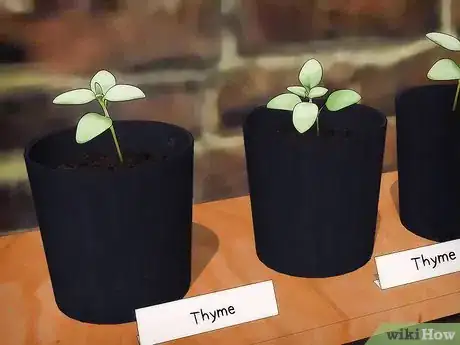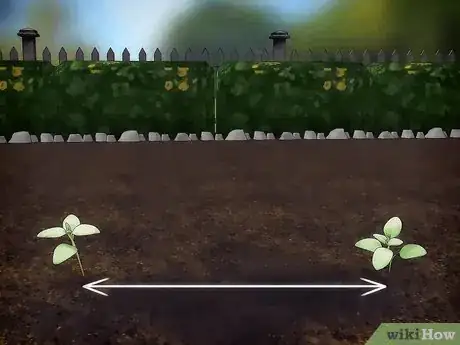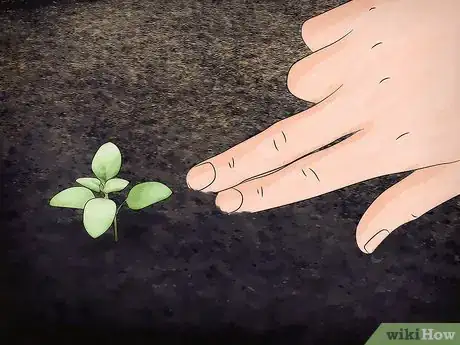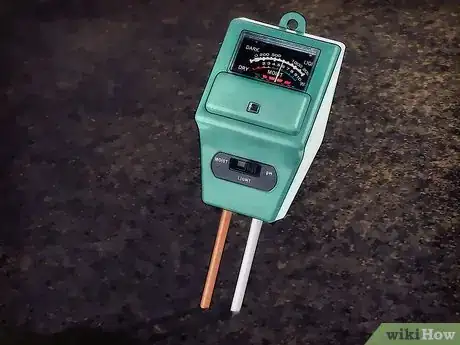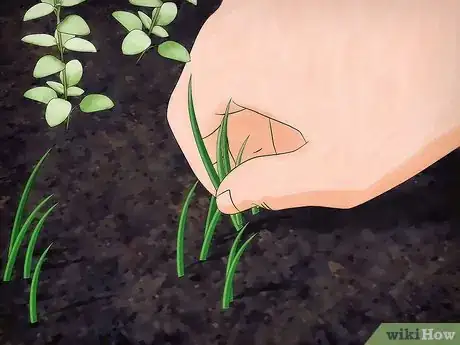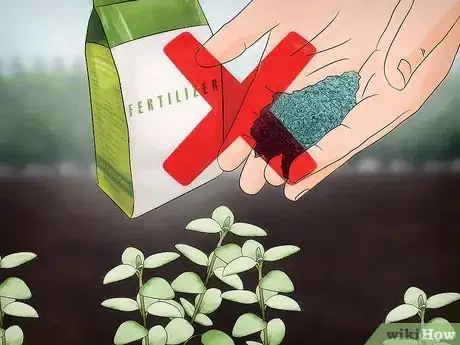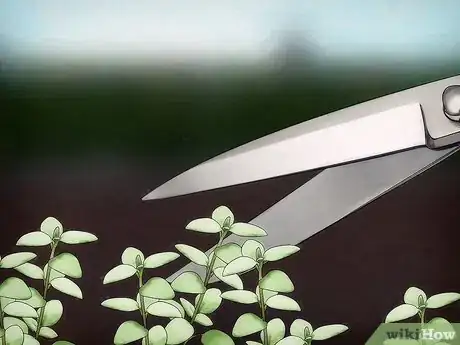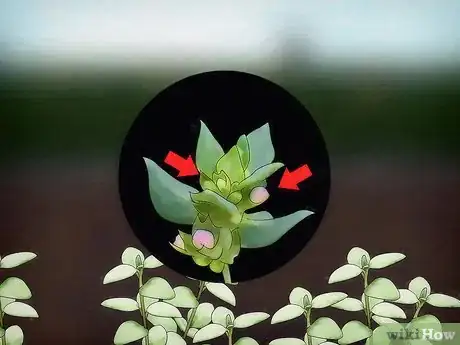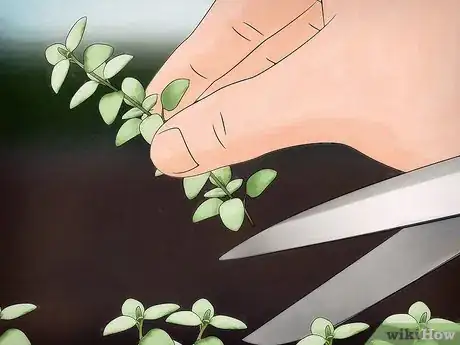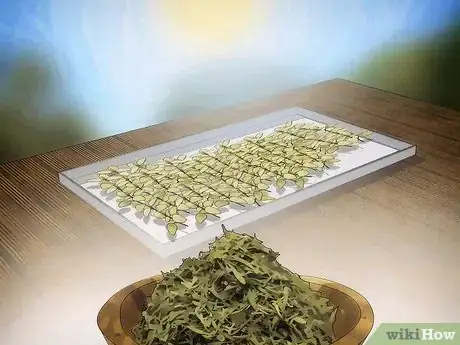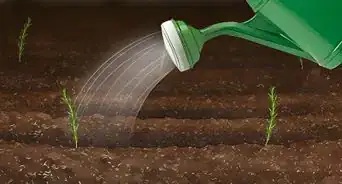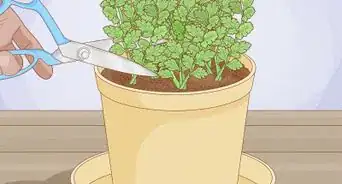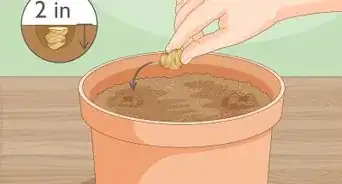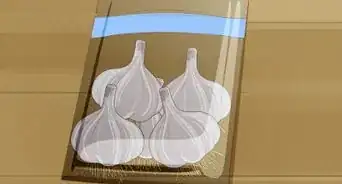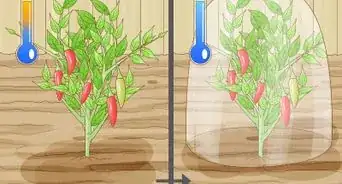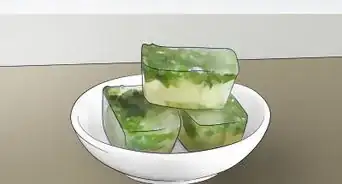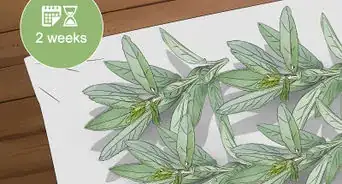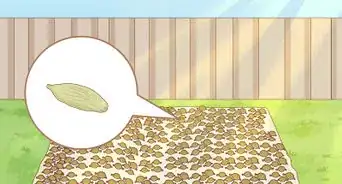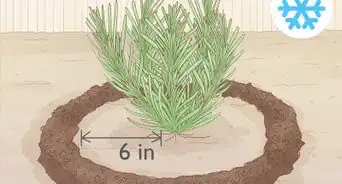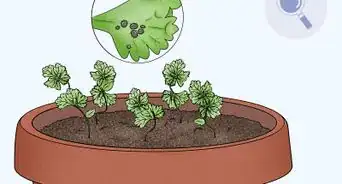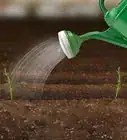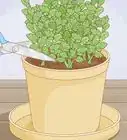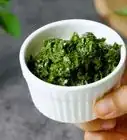This article was co-authored by Andrew Carberry, MPH and by wikiHow staff writer, Amber Crain. Andrew Carberry is a Food Systems Expert and the Senior Program Associate at the Wallace Centere at Winrock International in Little Rock, Arkansas. He has worked in food systems since 2008 and has experience working on farm-to-school projects, food safety programs, and working with local and state coalitions in Arkansas. He is a graduate of the College of William and Mary and holds a Masters degree in public health and nutrition from the University of Tennessee.
This article has been viewed 87,454 times.
Thyme is an ancient herb used in cooking and gardening. It produces attractive, aromatic foliage and can thrive in almost any climate. In colder climates, thyme is a hardy perennial, so it will survive the winter and live for several years. In warmer areas (such as USDA zones 10 and higher), it is usually grown as an annual, since it does not survive well in the hot summer. Aside from culinary purposes, many gardeners use this herb as a ground cover or border plant. It blooms with tiny flowers that are usually white, pink or lavender, and their fragrance can attract bees to your garden. Thyme is easy to plant, simple to care for and can be harvested year-round.
Steps
Planting Thyme
-
1Buy thyme plant seedlings from a nursery. Thyme can be grown from seeds, plant divisions, or seedlings. However, growing thyme from seeds can be difficult because their germination is often sluggish and uneven. Most gardeners suggest buying young thyme seedlings, which you can obtain at any nursery, or take cuttings from someone else’s thyme.[1]
- The most popular varieties of thyme are: Common Thyme, Golden King Thyme, Mother of Thyme, Lemon Thyme, and Garden Thyme.
-
2Plant seedlings in full sun when the ground is warm. Plant your thyme seedlings in spring about two to three weeks before the last frost.[2] For best results, plant them in soil that is about 70°F (21°C). Space the seedlings 8 to 12 inches (20 to 30 centimeters) apart. Thyme thrives in full sun, so plant them in a very sunny area.
- Most thyme plants will eventually grow to be 6 to 12 inches (15 to 30 centimeters) in height.
Advertisement -
3Provide an environment with excellent drainage. Thyme likes dry, sandy soil with good drainage. Plant thyme in well-drained soil. Never plant this herb in soggy or heavy soil.[3] This can result in root rot. If your soil does not appear to drain well, add some compost, sand, or organic material to help improve drainage.
- Thyme can be planted as a ground cover, around paving stones, or near a wall, as long as the drainage is good. You can also plant it in containers.
-
4Maintain a soil pH between 6.0 and 8.0. Thyme likes somewhat alkaline conditions and its nutrient requirements are minimal. If you need to raise the pH of your soil, add lime to it. You can fertilize the young plants in spring with compost, diluted fish emulsion or some other organic matter, but otherwise you won’t need to do much else to the soil.[4]
Caring for Thyme
-
1Control the weeds around your plants. Weeds will compete for the soil’s nutrients and slow the development of young thyme plants. Control the weeds around seedlings either through weeding or mulching.[5] Mulching with limestone gravel or builder’s sand can improve drainage around the plants and prevent root rot. You can try other mulches made of organic matter like leaf mold or straw, as well.
-
2Let the soil get completely dry between waterings. Thyme is a hardy, drought-resistant herb. You need to water the plants on a regular schedule, but not often. Too much water will cause root rot. Give the plants a good watering when you see the soil around them has gone completely dry. Soak the ground thoroughly and wait until the soil dries completely before watering your plants again.[6]
-
3Avoid over-fertilizing thyme. Once your seedlings take off, the plants will need very little attention to thrive. Thyme doesn’t need a lot of nutrients to survive and too much fertilizer will cause it to lose its flavor and become gangly. Mulch your plants in autumn with organic matter like leaf mold, well-rotted animal manure or compost.
- This will deliver the minimal nutrients thyme requires all year long, as well as protect the plants from frost once winter arrives.[7]
-
4Cut thyme back every spring. If you want your plants to continue being bushy and producing tender stems, you will need to prune your thyme back to half its previous height every spring. Do this after the last frost. If you do this, the next spring it will flourish again. After three to four years of growth with the same plants, their stalks will become woody and the plant will produce fewer leaves.
- At this point you may want to start a new batch of seedlings, especially if you cultivate thyme for culinary purposes.[8]
- Use an almanac to check when the last frost usually occurs. After this date, it may be safe to cut back the thyme.
Harvesting Thyme
-
1Harvest thyme just before the plant flowers for the best flavor.[9] Thyme will bloom with tiny white, lavender or pink flowers. If you grow your thyme for culinary purposes, you’ll get the most potent flavor from the herbs if you harvest right before the flowers begin to open. As for the flowers themselves, feel free to pinch them off if you like. This will stimulate the production of more leaves.
- However, the flavor of thyme won’t be negatively affected if you allow your plants to bloom. If you enjoy the way the flowers look, allow them to grow freely.[10]
-
2Clip off sprigs off as needed using scissors or pruning shears. You can harvest thyme at any point in the year, although the flavor is usually the best in June or July. This is when the flavor is most concentrated. Cut off fresh green sprigs in the morning. Leave behind the woody parts of the stalk. Strip the tiny leaves off the stems before using them.
- When trimming off sprigs, always try to leave behind at least five inches of growth on the plant. This will help it continue to flourish.
- The more you trim and prune your thyme, the more it will grow. Regular trimming will also make your plants grow in a more rounded shape.[11]
- Check an almanac or online to see when the first frost usually occurs in your area. Stop cutting thyme about two weeks before this date.
-
3Dry the harvested thyme sprigs somewhere warm and shady. Hang the sprigs in a dark, well-ventilated area to dry them. You can also dry them by laying them out on a tray and putting them in a food dehydrator. Once the pieces dry out completely, the leaves will easily fall off the stems.[12] After you’ve removed the dried leaves, store them in an airtight container until you’re ready to use them.
- You can also store your dried thyme in the freezer or preserved in oil or vinegar.[13]
Community Q&A
Did you know you can get answers researched by wikiHow Staff?
Unlock staff-researched answers by supporting wikiHow
-
QuestionWhen should I prune thyme?
 wikiHow Staff EditorThis answer was written by one of our trained team of researchers who validated it for accuracy and comprehensiveness.
wikiHow Staff EditorThis answer was written by one of our trained team of researchers who validated it for accuracy and comprehensiveness.
Staff Answer wikiHow Staff EditorStaff AnswerTrim the thyme plant yearly. Do a light prune of the whole plant after it has finished flowering. Doing this will help bushier growth next season. For more help with pruning thyme, check out the wikiHow: How to Prune Thyme.
wikiHow Staff EditorStaff AnswerTrim the thyme plant yearly. Do a light prune of the whole plant after it has finished flowering. Doing this will help bushier growth next season. For more help with pruning thyme, check out the wikiHow: How to Prune Thyme. -
QuestionDoes thyme need fertilizing?
 wikiHow Staff EditorThis answer was written by one of our trained team of researchers who validated it for accuracy and comprehensiveness.
wikiHow Staff EditorThis answer was written by one of our trained team of researchers who validated it for accuracy and comprehensiveness.
Staff Answer wikiHow Staff EditorStaff AnswerThyme has low needs in terms of fertilizing. It will be fine to provide it with a slow release fertilizer and only replace it as often as the packaging suggests. If you don't want to use commercial fertilizer, use organic matter (compost, leaf mold, well-rotted animal manure, etc.) in autumn to provide slow release fertilizer for the upcoming year. Doing this in autumn will protect the thyme through winter. Too much fertilizer will make thyme droop.
wikiHow Staff EditorStaff AnswerThyme has low needs in terms of fertilizing. It will be fine to provide it with a slow release fertilizer and only replace it as often as the packaging suggests. If you don't want to use commercial fertilizer, use organic matter (compost, leaf mold, well-rotted animal manure, etc.) in autumn to provide slow release fertilizer for the upcoming year. Doing this in autumn will protect the thyme through winter. Too much fertilizer will make thyme droop. -
QuestionHow far apart should I space thyme in the garden?
 wikiHow Staff EditorThis answer was written by one of our trained team of researchers who validated it for accuracy and comprehensiveness.
wikiHow Staff EditorThis answer was written by one of our trained team of researchers who validated it for accuracy and comprehensiveness.
Staff Answer wikiHow Staff EditorStaff Answer
wikiHow Staff EditorStaff Answer
References
- ↑ http://www.almanac.com/plant/thyme
- ↑ http://www.almanac.com/plant/thyme
- ↑ http://www.burpee.com/gardenadvicecenter/herbs/thyme/thyme/article10024.html
- ↑ http://www.thekitchn.com/everything-you-need-to-know-about-growing-thyme-221268
- ↑ http://www.burpee.com/gardenadvicecenter/herbs/thyme/thyme/article10024.html
- ↑ http://herbgardening.com/growingthyme.htm
- ↑ http://www.herbexpert.co.uk/growingthyme.html
- ↑ http://www.burpee.com/gardenadvicecenter/herbs/thyme/thyme/article10024.html
- ↑ http://www.thekitchn.com/everything-you-need-to-know-about-growing-thyme-221268
About This Article
To grow thyme, start in the spring by purchasing young seedlings from your local nursery, or by taking cuttings from someone else’s thyme to start your own. Then, plant the seeds or cuttings 8-12 inches apart in well-draining soil, in a spot that gets full sunlight all day long. After that, keep the area around your plants weeded, or spread mulch to control the weeds. Additionally, water your plants, but only when the soil around them is completely dry to keep the roots from rotting. For more tips, like how to harvest your thyme, scroll down!
